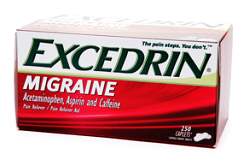Looking for suggestions. I have a small shop and have done several 2.7i conversions, turbo kits and even write chips for OBD1, but have never come across something like this (thinking it's electrical - maybe harness?)
uel relay not kicking.
No spark.
1984e with Motronic 1.3 and 885 top end - early 1.0 harness.
All +/- on DME checked, CPS checked, all relays checked, fusable link checked, pump checked out via pressure, filter is new, coil is good, grounds are solid.
The harness is used and had an issue at the AFM, but I used the old e harness to make it right, soldered heat shrunk and resistance tested, same as with the injector portion, also corrected with solder, heat shrink and resistance tested.
I made and adapter pigtail for the old square c101 to the new round c101 and mated all the corresponding wires together, all soldered, shrink and resistance tested (again, this is one of several of the same projects completed - 2.7i and m50 swaps).
Full aware of the orientation of the crank and cam position sensors, they are plugged in correctly.
It' acting like it isn't seeing the CPS (or if the CPS/cam reluctor were mixed up which aren't) but this thing has me stumped.
Guess the next thing is to test every connection at the ECU with the corresponding sensor or is there an easier way to check the harness?
EDIT: CPS space to hub is checked, damper checked out for correct position...
uel relay not kicking.
No spark.
1984e with Motronic 1.3 and 885 top end - early 1.0 harness.
All +/- on DME checked, CPS checked, all relays checked, fusable link checked, pump checked out via pressure, filter is new, coil is good, grounds are solid.
The harness is used and had an issue at the AFM, but I used the old e harness to make it right, soldered heat shrunk and resistance tested, same as with the injector portion, also corrected with solder, heat shrink and resistance tested.
I made and adapter pigtail for the old square c101 to the new round c101 and mated all the corresponding wires together, all soldered, shrink and resistance tested (again, this is one of several of the same projects completed - 2.7i and m50 swaps).
Full aware of the orientation of the crank and cam position sensors, they are plugged in correctly.
It' acting like it isn't seeing the CPS (or if the CPS/cam reluctor were mixed up which aren't) but this thing has me stumped.
Guess the next thing is to test every connection at the ECU with the corresponding sensor or is there an easier way to check the harness?
EDIT: CPS space to hub is checked, damper checked out for correct position...


Comment